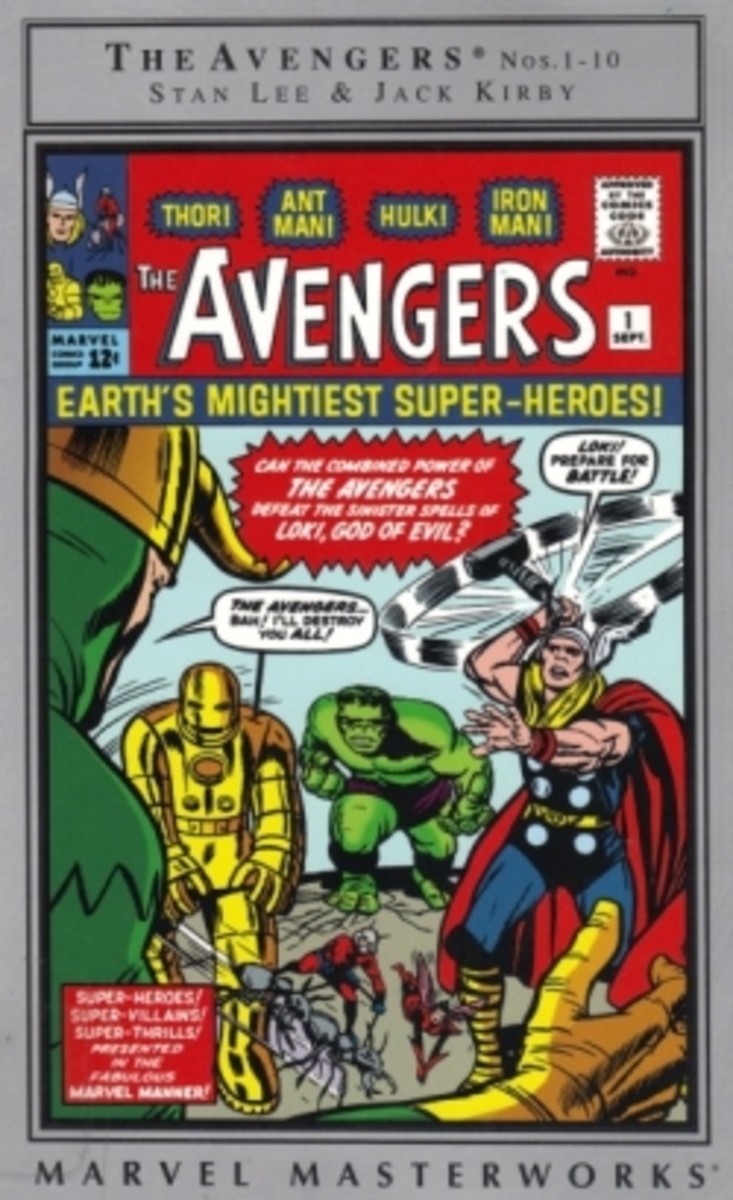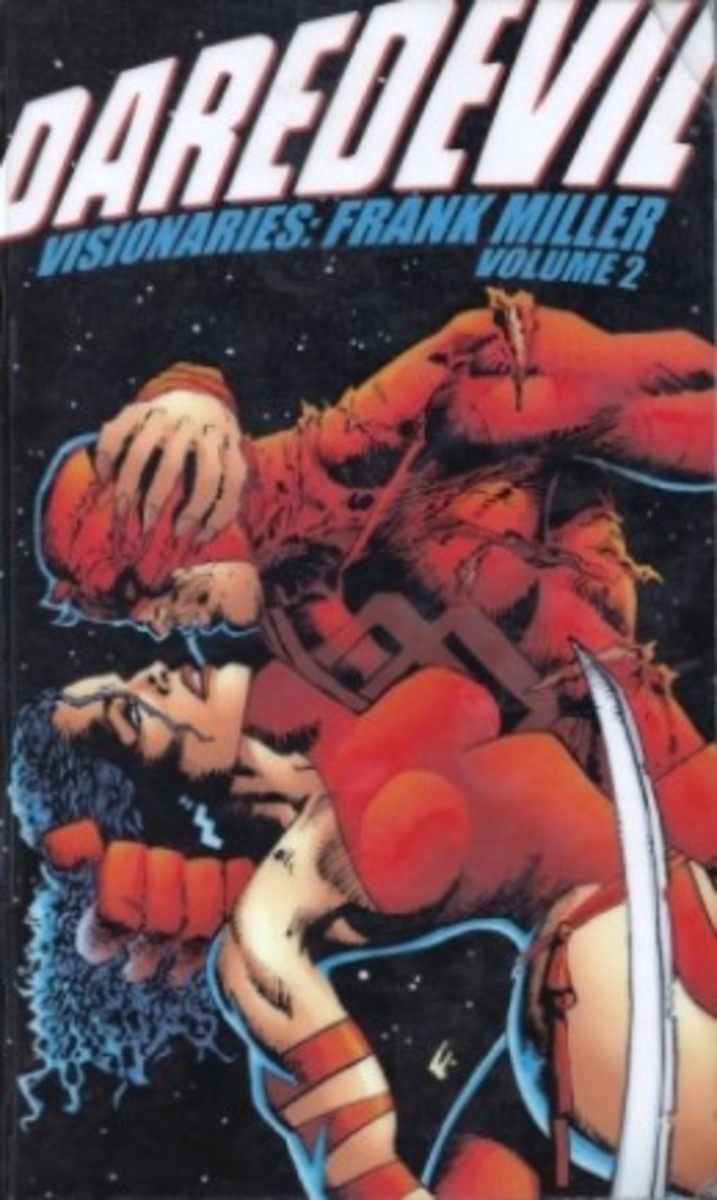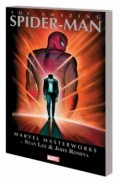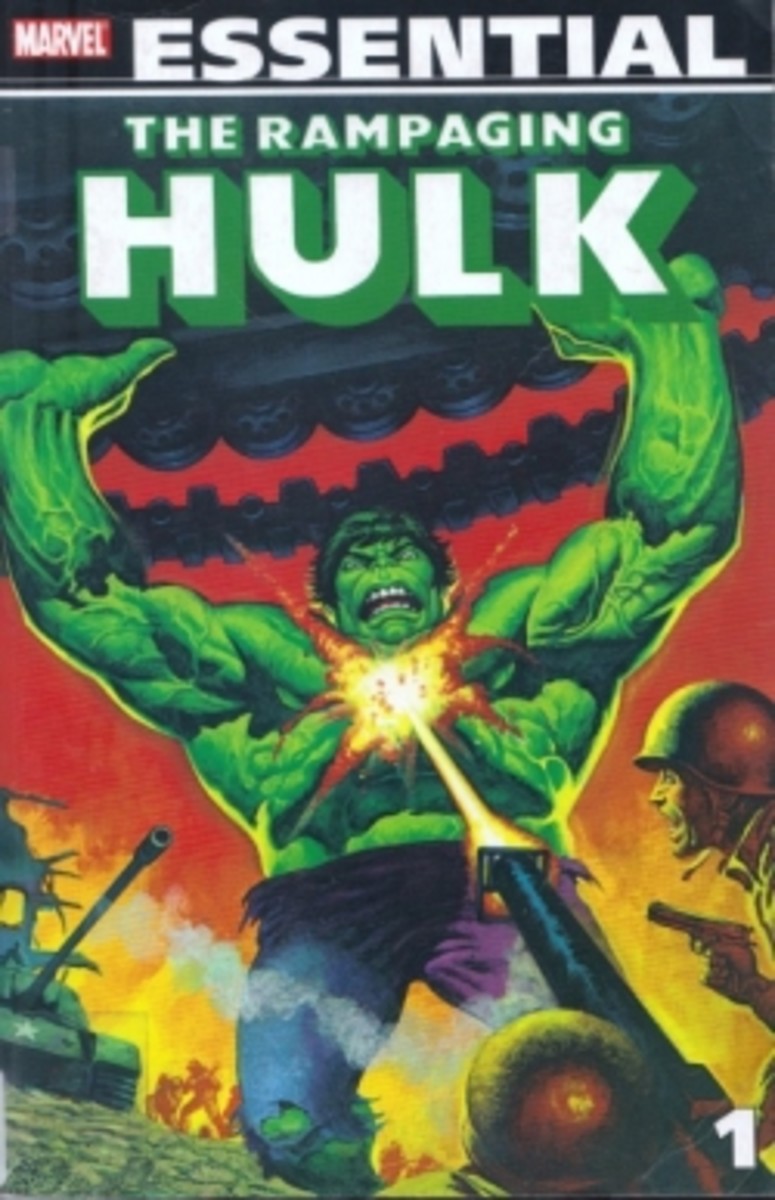Gene Colan, Comic Book Artist: An Appreciation
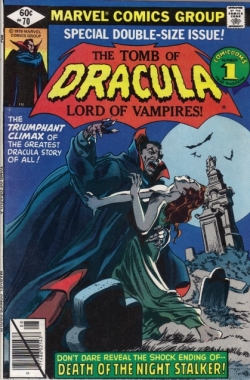
GENE COLAN: A Distinctive Artist Who Brought a Cinematic Style to Daredevil, Tomb of Dracula and Batman
Gene Colan developed such a moody, cinematic style during his six decades as a comic book artist that his work was as easily identified as the art of Jack Kirby or Jim Steranko.
He never received the fame that they did, which I think is a real shame, because most of his work wasn't on the top-tier books. But his run on Marvel Comics' Daredevil is very much respected by comic book fans, and his art on the entire 70-issue run of Tomb of Dracula is seen as an amazing accomplishment.
With his passing, the comic-book world has lost another great one.
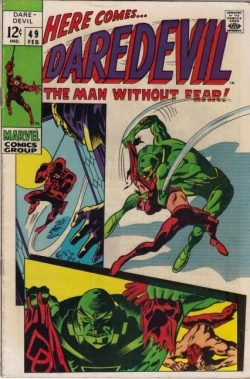
Dark Shades For Night Force, Gritty Style for Daredevil
Bringing a Cinematic Style to Comics
Gene Colan died Thursday, June 23, 2011, at the age of 84, ending a career in comic books that started in 1944 and that lasted until 2010. His artwork was very distinctive, with lots of dark shades and colors, perfect for a horror book like Tomb of Dracula or his later work on Night Force for DC Comics.
I remember he was one of the first comic book artists I could identify immediately as a young reader, because his work didn't look like anybody else's. No one tried to copy him, either, unlike the many would-be Jack Kirbys or Neal Adams clones that came along in the 1970s.
I'll always remember that Stan Lee called Colan one of the most cinematic artists, and certainly his work on Daredevil felt very gritty like a 1970s police movie. So when I heard of his death I pulled out some of my favorite comics of his, and felt the need to share this appreciation.
Following are some of the major series he worked on. He also drew many other comics, and even some other issues of the books that I mention here, but there are far too many for me to list everything he did over his six decades!
Secrets in the Shadows - The Art & Life of Gene Colan
Here is a recent biography of Gene Colan that is well worth getting. From the product description on Amazon:
``Featuring rare childhood drawings, photos, recently-discovered wartime illustrations, and original art and sketches from throughout his nearly 60-year career, this book offers new insight on the inspirations, challenges, and successes that shaped Gene 'the Dean' Colan.''

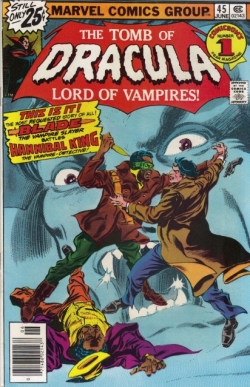
Drawing The Entire Run of The Tomb of Dracula
The 1970s' Finest Horror Comic
Gene Colan drew The Tomb of Dracula from the first issue in April 1972 to the last one (No. 70) in August 1979. The story is often told that when Gene Colan heard Marvel Comics was going to debut a comic about Dracula he was so eager to be the artist that he was willing to audition, which at that stage in Colan's career would have been like Jerry Seinfeld offering to audition to do a stand-up show.
Writer Marv Wolfman (yes, a guy named Wolfman wrote Tomb of Dracula!) has said Colan's ability to convey emotions enabled him to write a more plot-driven book, and that really made the comic stand out for me in the 1970s.
Wolfman, who took over with issue No. 7, and Colan co-created the vampire hunter Blade in issue No. 10, a character that has been portrayed in several movies by Wesley Snipes and also in a TV series.
The comic was the longest lasting of Marvel's early 1970s horror books, not counting Ghost Rider, which at times was more of a superhero comic than a horror one.
Tomb of Dracula on Amazon! - Order Your Marvel Comics Online!
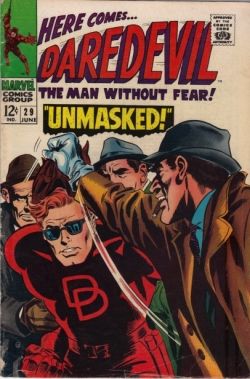
Before Frank Miller, Gene Colan Was THE Daredevil Artist!
Seven Years of Marvel Comics' Storytelling
Colan took over the art duties of Daredevil with issue No. 20 (Sept. 1966) and stayed with the series until issue No. 100 (June 1973), missing only three issues during that time. Daredevil was my favorite comic when I was a child (I think the first one I read was No. 80 or 81), and I remember how excited I was when buying up all the older issues.
This was in the early 1970s, when gritty police movies were big, and I always found that Colan brought that kind of atmosphere to his Daredevil run even though it was a superhero book and he was fighting costumed villains. His darker style was very much in contrast to Kirby's bombastic art, or even the very clean work done by John or Sal Buscema. Colan defined the look of Daredevil before Frank Miller began his celebrated run on the character in May 1979.
I am using the cover of Daredevil No. 29 to illustrate this section because I have always found it one of the silliest. I guess whoever came up with the idea wanted to make sure any casual reader would know immediately that Daredvil was blind, but come on, does anybody really think he'd wear sunglasses under his mask?
Gene Colan's Daredevil at Amazon! - Collect the Marvel Essential Series Now!
You can read all the Gene Colan-drawn Daredevil stories by either buying the individual issues, which can be quite expensive, or by purchasing the Marvel Essentials collections of the comic book. Marvel Essential Daredevil Vol. 1 only has his first few issues. Volumes 2 and 3 are chock-full of his art!
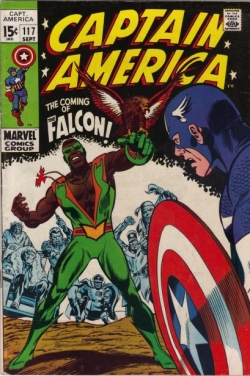
Captain America and the Falcon!
Introducing Comics' First African-American Superhero!
Gene Colan's run on Captain America lasted 22 issues, from Nos. 116-137. In the second one, issue No. 117 (September 1969), Colan made his contribution to comic history by creating Marvel Comics' first African-American superhero, the Falcon (I also think he was the first African-American superhero in all of mainstream comics but I'm not sure).
Colan in interviews has said he pitched the idea to writer Stan Lee because he liked to draw many different kinds of people and that Lee enthusiastically embraced the idea.
Gene Colan's Captain America at Amazon! - Split Over Two Volumes of Marvel Essential Collections
Gene Colan's run on Captain America is split over Marvel Essential Captain America volumes 2 and 3. Volume 1 is mostly Captain America's adventures in Tales of Suspense, which are neat as well. For a review of that volume see here:
Captain America in the 1960s: A Marvel Comic Book Review
Marvel Essential Captain America Volume 1 reprints Captain America's stories from Tales of Suspense No. 59-99 as well as the first three issues of the newly-renamed Captain America comic.
You can buy Vol. 2 and 3 on Amazon today!
Who Was the Model for the Falcon? - Marvel Comics: The Untold Story
According to the new book, Marvel Comics: The Untold Story, the Falcon was introduced partly to respond to criticism of the lack of black characters at Marvel, including from the East Village Other publication. His look was based on O.J. Simpson, at the time a college football star.
That's just some of the many cool details from this history of the Marvel Age of comics, in which Colan played a decades-long role. Check out the book today!
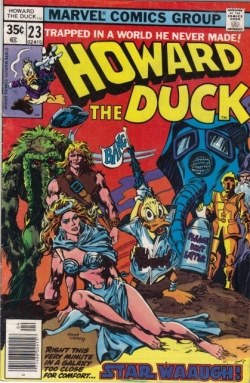
Howard The Duck's Strange Adventures
Drawing the 1970s Marvel Comics Satire
Gene Colan drew most of the 1970s Howard The Duck's comic book series, which was mainly social satire by writer Steve Gerber (who sadly also recently passed away). Colan in numerous interviews said that this book was the one he had the most fun with, mainly because Gerber was such a funny guy.
I think Colan's artwork helped make the book more adult, because in so many other artists' hands Howard the Duck comes across as a cartoonish character. With Colan as penciller, you really take him more seriously, which helps with the satire. Colan drew issue Nos. 4-20, 24-27, 30-31.
All of Gene Colan's Howard The Duck Stories in One Book - Adventure into Fear, Man-Thing and Marvel Treasury Edition too!
Marvel Comics collected all of Howard the Duck's early appearances in one book that was released in 2008. Here is the description off the Amazon website:
Experience for yourself the complete comic adventures of Howard in this Omnibus collection, reprinting his first appearances and the entire run of his first series. Collecting stories from Adventures Into Fear #19, Man-Thing #1, Giant-Size Man-Thing #4-5, Howard the Duck #1-33, Marvel Treasury Edition #12, and Marvel Team-Up #96.
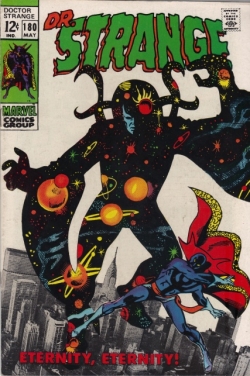
The Bizarre World of Dr. Strange!
Second Only to Steve Ditko!
Steve Ditko (co-creator of Spider-Man) was the first to develop the mystical, magical world of Dr. Strange during the character's run in Strange Tales, and really no one has ever matched his masterpieces. But Gene Colan added his own spin to the sorcerer's adventures during an 11-issue run on the short-lived Dr. Strange comic of the 1960s. Colan drew issue Nos. 172-178, then 180-183 (the last of the series, in November 1969). Issue No. 179 was a reprint without Colan's work.
During the period, to build sales Marvel made Dr. Strange more of a superhero, even giving him a mask and secret identity. But Colan's work kept the moodiness and darkness of the sorcery ever-present, which made it a very odd mix. Well worth seeking out.
All of Gene Colan's Dr. Strange Run in One Book! - Marvel Essential Dr. Strange Vol. 2
This one collection contains all of Gene Colan's Dr. Strange run, as well as numerous other stories about the Sorcerer Supreme!
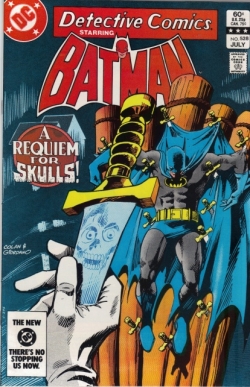
Batman's Main Artist In The early 1980s
Colan Precedes Frank Miller Again!
Gene Colan was Batman's main artist in the first half of the 1980s, drawing Batman issue Nos. 340, 343-345, 348-351, 373 and 383; as well as the character's stories in Detective Comics issue Nos. 510, 512, 517, 523, 528-538, 540-546 and 555-567.
This was a period when DC Comics was integrating the two series, so a story might start in Batman and continue in that month's Detective Comics. It was not my favorite work of Colan, in part because after his run on The Tomb of Dracula he had developed such an extensive use of shadows and darkness that the books seemed too dark for the stories the writers were trying to tell.
I have read that during the period sales of the books declined, and that it was only after Frank Miller's limited series Batman: The Dark Knight Returns in 1986 that sales picked up. Still I wanted to mention this run here because it was such a dominant part of Colan's career in the 1980s.
New Gene Colan Collection - All of Colan's Batman Stories in One Volume!
DC Comics released a one-volume book in August collecting all of Gene Colan's work on the two Batman series in the 1980s. Here is Amazon's description:
``For the first time, DC Comics collects the moody Batman stories drawn by comics legend Gene Colan.
These never-before-collected tales from the early 1980s spotlight the art of comics legend Gene Colan. Known for his moody, shadowy illustrations, Colan was a natural fit as artist on Batman when he came to DC in the 1980s. His run of stories in the pages of both BATMAN and DETECTIVE COMICS included appearances by some of Batman's greatest foes, including Man-Bat, The Monk, Rupert Thorne and more.''
It looks like a really great deal if you don't already have the comics themselves!
What was Colan's Best Comic Book Run? - The Tomb of Dracula? Daredevil? Or Maybe Something Else?
It is always hard to pick highlights from the career of a longtime comic-book artist like Gene Colan because he did so many books over the decades, and did them so well! I have tried to pick some of his best runs, especially the ones I was familiar with, but he drew many comics before the 1960s and after I stopped reading them in the early 1980s. I'm curious to see if you believe I did pick out his top work, and if not, what you would have recommended and why.
What was Gene Colan's Best Comic-Book Run?
Spider-Man, Hulk, X-Men and Iron Fist
Our Other Comic Book Reviews!
I have been tapping my childhood to review a number of collections of comic books from my youth, so I hope you will check them out.
Marvel Masterworks X-Men Comic Book Review: Enter the Phoenix! Plus Wolverine, Storm and Nightcrawler!
This volume reprints Uncanny X-Men No. 101-110 in full color, a collection of 10 comics during a run that really established the new X-Men as a major franchi...
Captain America in the 1960s: A Marvel Comic Book Review
Marvel Essential Captain America Volume 1 reprints Captain America's stories from Tales of Suspense No. 59-99 as well as the first three issues of the newly-...
The Ghost Rider Debuts! A Marvel Comic Book Review
The Marvel Essential series contains four volumes devoted to the Ghost Rider superhero, who first appeared in 1972 in a comic book called Marvel Spotlight. H...
X-Men
X-Men: The Dark Phoenix Saga collects issues No. 129-137 of the original X-Men comic-book series, a series of tales that ends with the final battle over Jean...
The Avengers in the Late 1960s: A Marvel Comics Review!
Marvel Essential: Avengers Vol. 3 contains issues 47 to 68 of the comic's original series, as well as Avengers Annual No. 2. For the most part this collectio...
Marvel Essential Fantastic Four Comic Book Review: Dr. Doom and Daredevil Guest Star as the Legend Grows!
The Fantastic Four rocked the comic-book world when it debuted in 1961, with writer Stan Lee and artist Jack Kirby introducing more characterization and real...
The Avengers Debut! A Comic Book Review of the Marvel Masterworks Collection!
The Avengers Volume 1 was one of the first four collections when Marvel Comics began publishing its Marvel Masterworks series in 1987. Since then the company...
The Rampaging Hulk Marvel Essential Comic Book Review
Marvel Essential: The Rampaging Hulk 1 is a collection of Hulk stories from his short-lived late 1970s magazine. This volume includes the tales from issues 1...
Captain America
Marvel Masterworks: Captain America Volume 1 reprints the superhero's adventures in Tales of Suspense No. 59-81 in full color. This was Captain America's fir...
Darwyn Cooke
DC: The New Frontier was a series of six comic book issues in 2004 that focused on the 1950s, when many of the major superheroes that populate the modern DC ...
Spider-Man in the 1970s! A Marvel Comics Book Review
The Essential Spider-Man Vol. 8 contains issues No. 161-185 of the Amazing Spider-Man series, plus Nova issue No. 12 and the Amazing Spider-Man Annual No. 11...
Daredevil Visionaries: Frank Miller A Marvel Comic Book Review of The Complete Elektra Saga!
Daredevil Visionaries: Frank Miller Vol. 2 collects issues 168-182 of the original Daredevil series. Issue 168 was the first comic of the series that Miller ...
The X-Men in the Early 1970s: Neal Adams
Marvel Essential Classic X-Men volume 3 is a real hodge-podge of stories that shows just how far below the radar screen the original X-Men had fallen in the ...
Essential Iron Fist: A Marvel Comic Book Review!
Essential Iron Fist Volume 1 collects the first four years' worth of Marvel comics starring the character, who debuted in 1974 during a martial arts craze. T...
Gene Colan Panel at the New York Comic-Con
Gene Colan was discussed at the New York Comic Con in October, 2011, with four of his colleagues discussing Colan's art and his contribution to comics. I attended the panel and plan to update this lens with comments from the panelists. In the meantime please see my review of the comic convention, including the panel.
Gene Colan, Comic Book Artist: An Appreciation
Gene Colan developed such a moody, cinematic style during his six decades as a comic book artist that his work was as easily identified as the art of Jack Ki...
Joe Kubert: Remembering Another Great Comic Book Artist
Sgt. Rock, Tarzan, the Unknown Soldier and Tor!
In August 2012 we lost another great comic book artist, Joe Kubert. I think Kubert's best work was in war comics, a genre that I don't think Colan did much in. Kubert also is well-known as the founder of a school of cartooning in New Jersey that has produced hundreds of artists over the decades.
Here is my appreciation of his work:
Joe Kubert, Comic Book Artist: An Appreciation
Comic book artist Joe Kubert died on Aug. 12, 2012, after more than seven decades of drawing and creating comic books. Over those many years he worked on a w...
Here is your chance to comment on Gene Colan, his art, this lens, or anything else that you have in mind related to comic books. Thanks for stopping by!









